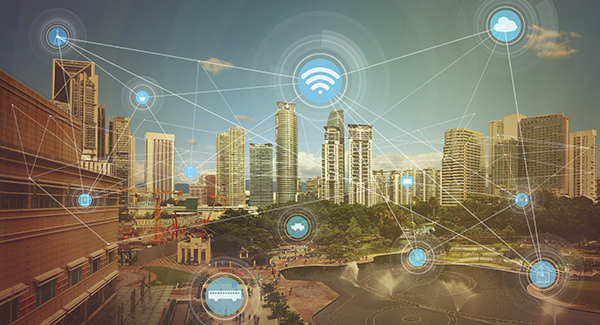As the global 6G race enters a critical window period, what innovation challenges does my country face?

From the launch of the 6G roadmap by the Next G Alliance in North America at the beginning of the year, to the recent Japan Beyond 5G Promotion Alliance's plan to submit a draft 6G technical requirement to the ITU, the 6G popularity continues to heat up. The realization of 6G commercial use in 2030 has basically become an industry consensus. So where will the world go in 2030? What new changes will 6G bring to us? What are the key technical indicators of 6G? What is the significance of 6G when the world has not yet fully commercialized 5G? What challenges will 6G development face...

6G is not 5G plus 1G
When every new generation of mobile communication technology appears, people will ask the same question - what value will the new technology bring to us, and how will it change our production and life?
“We firmly believe in the convergence of the physical, digital and virtual worlds. There are more and more types of connected devices, such as smartphones, tablets, XR, PCs, and even home broadband and IoT devices. Those connected devices can digitize data , such as smart Digital twins of factories, or new ways of handling smart cities and logistics tracking, will have the ability to digitize data. This ability is also being combined with the evolution of spatial computing. AR and VR are changing the human-machine interface, which is how we interact with The way technology interacts. So whether it's smart schools, or the way we use technology in hospitals, factories, training and learning, it's a combination of AR and VR, a fusion of the physical world, the digital world and the virtual world."Qualcomm Global Vice President Zhuang Simin gave his imagination of the 6G world.
However, going from 5G to 6G is not as simple as adding "1G".
"6G will be based on the three major application scenarios of 5G, plus two major application scenarios of artificial intelligence and perception, and five typical scenarios including ultra-high speed, ultra-reliability, ultra-large scale, and connection AI and communication perception." Huawei Wireless Wang Jun, a technical expert in the technical laboratory, believes that.
It is foreseeable that the future 6G network will not only be an enhanced version of the three major characteristics of 5G, but will also "further develop capabilities beyond communication".
From the perspective of the development history of mobile communication, from 1G to 5G, terrestrial mobile communication network is the main body, while 6G will develop in the direction of multi-network integration to achieve three-dimensional coverage of the whole area. The most revolutionary progress will be how the space-based network will be developed. Integrate with ground-based networks such as cellular mobile communications to build an air-space-ground integrated network to achieve seamless access and ubiquity.
5G is in the ascendant, what is the significance of 6G?
But what is the urgency and necessity of launching 6G research at a time when 5G applications are in the ascendant?
The success of 5G is critical to the future development of 6G. Looking back on the development process from 3G to 4G, it is not difficult to find that the emergence of 3G smart phones has fostered the rigid demand for the development of mobile Internet, and also laid the foundation for the vigorous development of 4G mobile Internet. Similarly, although the current 5G commercial model has not achieved breakthrough success, the 5G application has been in a trend of competition, the exploration of deep integration applications is entering the "deep water area", and the 5G-Advanced technical standards are still evolving and improving. The exploration and development of 5G vertical industries in the future will foster new industrial ecology and business models, and will also lay a solid foundation for 6G to realize the "intelligent connection of all things".
Since the 5G era, the main object of mobile communication applications and innovation has shifted from individuals to industries. However, in the field of industrial applications, 5G has inherent "defects".
"5G does not focus on the application of To B, and it is neither scientific nor reasonable to directly move the system architecture and equipment of 5G To C to 5G To B." Wu Hequan, academician of the Chinese Academy of Engineering and chairman of the Future Mobile Communication Forum, believes that , industry-oriented applications will be the focus of 6G research, "Industrial Internet should become the focus of 6G research, and more attention needs to be paid to the requirements of low latency and determinism. To B should be the focus of 6G research, and propose innovations in architecture and management. Program".
The next 3 to 5 years is a key window period for 6G development
Today, 6G is still in the stage of vision demand research and concept formation, and 6G technology directions and solutions are still being explored. "The next 3 to 5 years will be a window period for the development of 6G potential key technologies, which is the key to seizing the technical commanding heights in the communication field and cultivating the industrial foundation." said Yi Zhiling, chief scientist of China Mobile Research Institute.
At present, with the large-scale commercial use of 5G networks, the global strategic layout for 6G research and development has been fully launched. Major countries and regions in the world have launched 6G research, and adopted measures such as increasing capital investment and deploying scientific research projects to accelerate the research and development of 6G innovative technologies.
The EU put forward a relatively clear planning roadmap, and completed the 6G industry-university-research framework project in the third quarter of 2020; Finland released the 6G white paper "Drivers and Main Research Challenges for 6G Ubiquitous Wireless Intelligence", and carried out the 6G vision and technology application. The South Korean government has proposed the goal of "leading 6G commercialization" and plans to achieve the world's first 6G commercialization in 2028; Japan has released the strategic goal of B5G promotion, and plans to complete 6G basic technology research in 2025 and achieve commercialization in 2030; the United States also Since 2018, 6G research has been launched. The preliminary research includes 6G chips, integrated communication between space and sea, especially satellite Internet communication.
6G has become a high ground for national strategic competition. Therefore, technical standards face the risk of differentiation. Wu Hequan reminded that it is necessary to clearly realize that because of competition, we should not go deep into the demand for 6G research, and we should not make up our minds to do long-term research on disruptive original technologies.
As early as the 2021 World Artificial Intelligence Conference Trusted AI Forum, Huw Price, academician of the British Academy of Sciences, professor of the School of Philosophy of Cambridge University, academic director of the Future Intelligence Research Center of Cambridge University, and H. Vincent Poor, academician of the National Academy of Sciences and Engineering of the United States, adopted video to participate will give a speech. The two foreign AI masters discussed the governance of artificial intelligence from a global perspective, and discussed how the 6G frontier technology affects human society and other issues.
China Mobile also displayed innovative applications such as "5G﹢Smart Sports", "5G﹢Online Museum" and cross-terminal voice artificial intelligence multimodal interaction in the "Empowering Digital Life" exhibition area. In the implementation process of these applications, it is necessary to synchronously collect information such as skeleton position, strength, and direction for multiple people in real time.
In addition, 5G﹢smart driving, 5G﹢smart education, 5G﹢smart road inspection, 5G﹢smart logistics, 5G﹢smart government affairs... 5G and artificial intelligence as a digital base, a more intelligent picture of life and production is slowly unfolding. More importantly, it can be clearly felt from the conference that 5G and artificial intelligence are not a simple technology superposition, but a fission-level innovation. As the experts at the meeting said, 5G and artificial intelligence are the most core technologies currently leading digital transformation. It is necessary to give full play to the role of 5G in "building a foundation" and the "spillover driving" effect of artificial intelligence, which will eventually inspire 5G ﹢The "endogenous fusion reaction" of artificial intelligence builds an energy-gathering ring in which technologies are deeply intertwined and integrated, thereby triggering subversive and all-round innovations in production and life.
All in all, the success of 5G networks and applications is the premise of 6G research. It is necessary to tap the market from 5G applications. Some 6G technologies can also be tested with 5G in advance. "It takes a process for academic research on 6G technology to move towards an industrial vision." But as Xianglibin said: "Our discussions about 6G new concepts, new technologies, and new ideas today will all be related to the face of tomorrow's mobile communications, and then change the face of human society ."